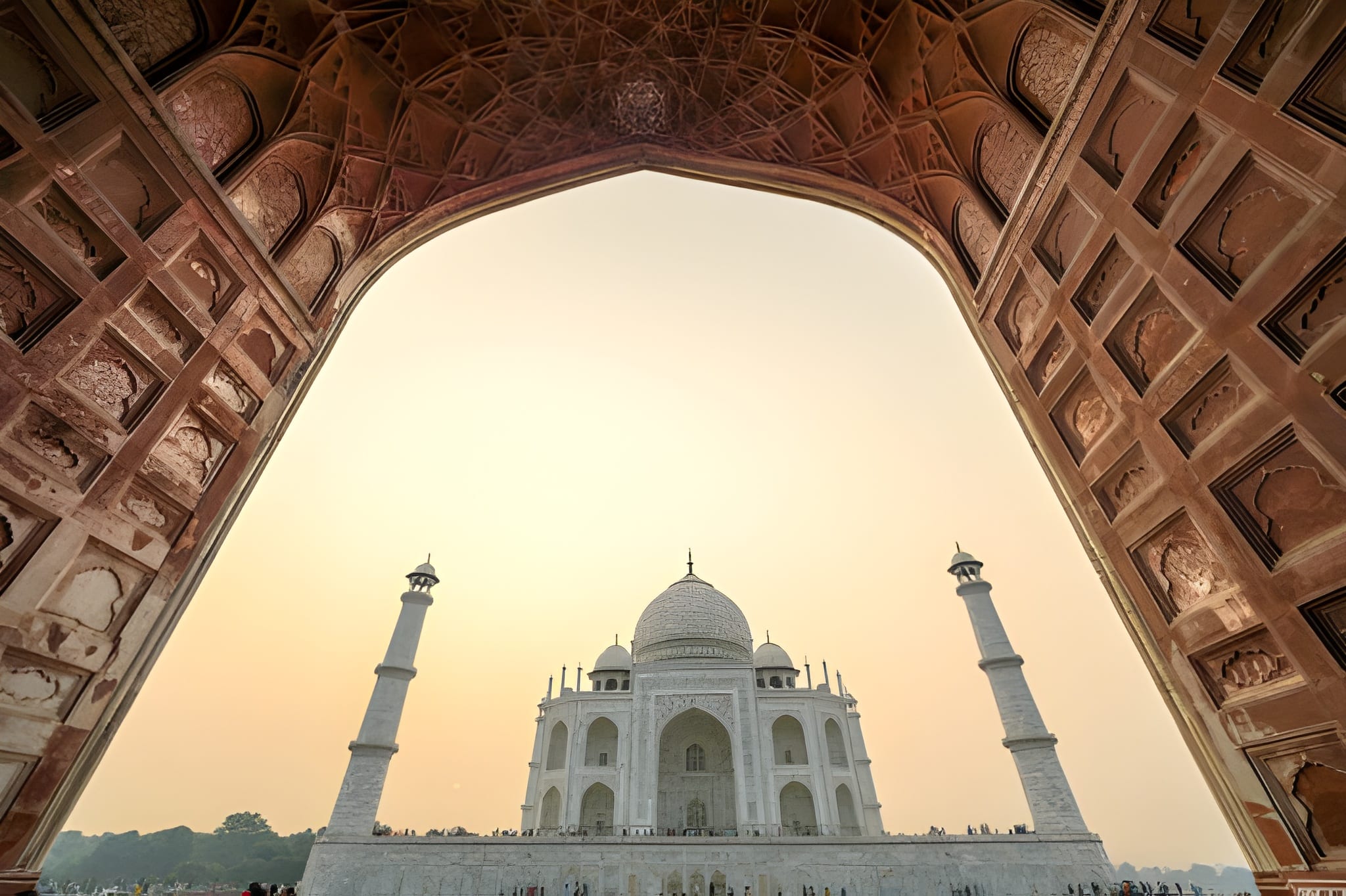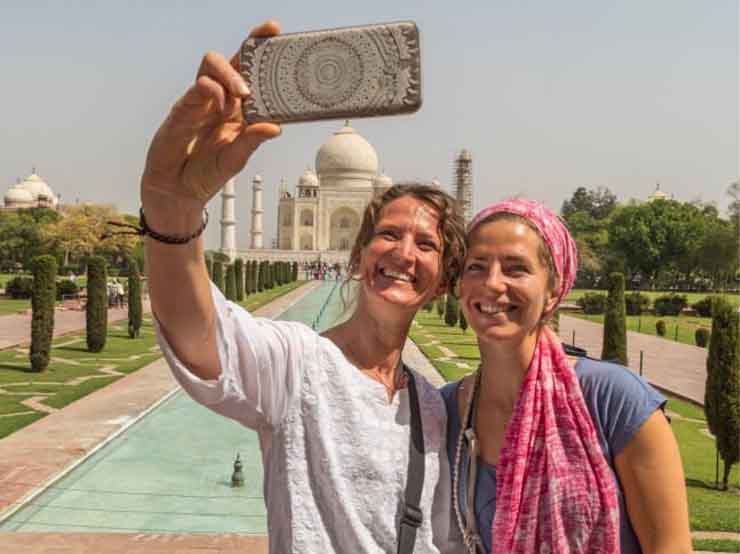The Taj Mahal is one of the most iconic examples of Indo-Islamic and Mughal architecture in the world. Built in the 17th century by Emperor Shah Jahan in memory of his beloved wife Mumtaz Mahal, this ivory-white marble mausoleum in Agra, India, is more than a monument—it is a masterpiece of art, culture, and history.
A Blend of Architectural Traditions
The Taj Mahal represents the perfect synthesis of Persian, Islamic, and Indian architectural styles. Its grand symmetry, decorative calligraphy, intricate floral motifs, and delicate marble inlays showcase the precision and elegance of Mughal craftsmanship. The large central dome, rising majestically above the structure, is surrounded by four smaller domes, creating a sense of harmony and balance.
The four minarets at each corner are both functional and aesthetic. Slightly tilted outward, they were ingeniously designed to protect the main mausoleum in case of an earthquake. The fusion of red sandstone with white marble, along with semi-precious stone inlays like jasper, jade, and turquoise, illustrates the grandeur and refinement of Indo-Islamic design.
The Gardens and Symbolism
The Taj Mahal complex is not just about the main mausoleum—it also includes an extensive Charbagh, or Persian-style garden, divided into four parts by water channels. These gardens symbolize paradise, reflecting the Islamic vision of eternal life and peace. When visitors walk through the lush pathways, they experience not just the beauty of nature, but also the spiritual calm the architecture was meant to inspire.
Mughal Craftsmanship at its Peak
The precision of the pietra dura technique, where artisans inlaid semi-precious stones into the white marble, reflects the extraordinary skill of Mughal craftsmen. The Quranic calligraphy carved in black marble along the arches and entrances further emphasizes the monument’s sacred purpose. Every detail—from the symmetry of the layout to the glow of the marble under different lights of the day—was designed to evoke awe and admiration.
Why the Taj Mahal Still Matters
The Taj Mahal is not only a UNESCO World Heritage Site but also a symbol of love, unity, and timeless beauty. It draws millions of visitors from across the globe who come to witness its architectural brilliance and cultural heritage. As one of the finest achievements of Indo-Islamic and Mughal art, it continues to inspire architects, artists, and travelers alike.
Plan Your Visit
A journey to India is incomplete without experiencing the magic of the Taj Mahal. To make your visit smooth and memorable, book your tickets easily online at Ticketstajmahal.com. Secure your entry, avoid long queues, and step into history with ease.
The Taj Mahal is more than a monument—it is a timeless celebration of love, beauty, and architecture. Don’t miss the chance to see this wonder of the world in person.










Comment (0)